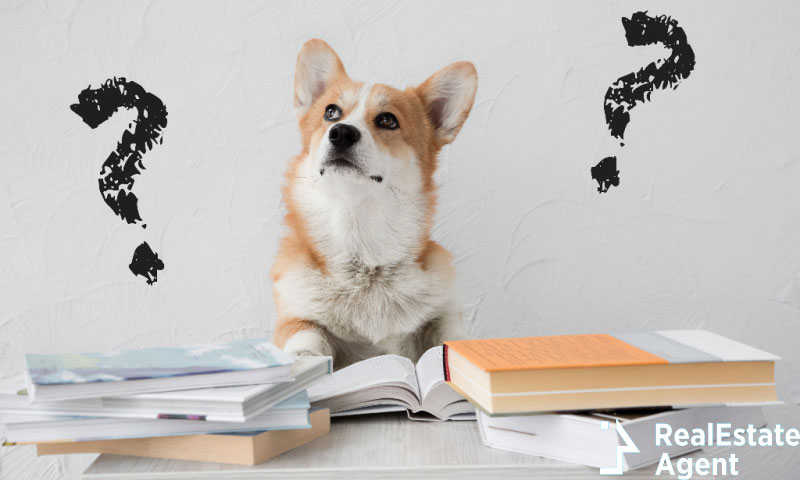A service animal is any dog individually trained to perform work or tasks to benefit a person with a disability, including a physical, mental, sensory, psychiatric, intellectual, or other mental disability. Tasks performed may include, but are not limited to, pulling a wheelchair, retrieving dropped items, alerting a person to a sound, reminding a person to take medication, or pressing an elevator button. Studies have shown that dogs possess health benefits, can increase fitness, reduce stress, and increase overall well-being. Service dogs combine these skills with training to perform specific tasks for people with disabilities, and over the past decade, the use of service dogs has expanded rapidly.
As of March 15, 2011, the only animals recognized as service animals are dogs because they are intelligent and can be trained. The training for these animals it’s tough, and sometimes teaching a service dog may be equivalent to training a dog in the army. Any breed of dog can serve as a service dog. A few breeds are worldly recognized for being very good at their job due to their size. For example, large dogs like labradors are widespread as service animals for those who can’t see, so their big size can help their owners to avoid danger.
Top ten service dog breeds
- Labradors
- Golden Retrievers
- German Shepherds
- Poodles
- Boxers
- Great Danes
- Border Collies
- Bernese Mountain Dogs
- Pomeranians
- Portuguese Water Dogs
Type of service animals
There are many service animals or service dogs as you want to call them, and each has unique characteristics that can benefit its owner. For every type of need, the dogs are specifically trained on the primary necessity of their owners. Being a service dog requires a lot of training and preparation.
Dogs can be trained to help people suffering from diabetes or epilepsy. Usually, the most common service dog we encounter is the guide dog which allows visually impaired people to live more independently, but did you know that the list of service animals is big and varied? Check out the list down below.
Allergen detection dogs
These assistance dogs are becoming more popular as food allergy rates in children increase. In addition to being useful in the home, these dogs can walk children to school and do social activities outside the home. They help identify allergy threats. This can be a handy tool, especially when children eat out and are unaware of the ingredients in various foods.
Training service dogs for food allergies are similar to training police and military dogs who sniff out drugs and explosives. The training services are reward-based and teach dogs to spot specific allergens.
Autism service dogs
The primary purpose of a child’s autism assistance dog is to keep the children they work with safe. Service dogs are trained to help people with autism become independent and perform activities of daily living similar to neurotypical people. For example, an autistic service dog can be trained to keep an autistic child from leaving the house unsupervised. When an autism service dog is paired with a child, the dog takes over the parent’s orders, not the child’s. Autism service dogs also warn parents about dangerous situations associated with the children they work with.
Diabetic alert service dogs
Severe hyperglycemia or hypoglycemia is dangerous in diabetes. This can lead to serious long-term and short-term health complications. So how can these type of dogs help their owners? Typically the diabetic alert dogs are trained to help people with type 1 diabetes or type 2 who are insulin-dependent. These dogs are trained to help if the owner’s blood sugar is too low or too high. They can alert other people to help their owner if there are blood sugar changes, and they can provide emotional support. These trained dogs can also retrieve medications or supplies in an emergency.
Guide service dogs
A guide dog can make everyday life easier and give a visually impaired person more freedom. Guide dogs are also known as seeing-eye dogs. They are the most known type of service dogs.
Regardless of whether there are traffic lights, stairs, or doors, a guide dog guides its blind or severely visually impaired user safely through everyday life. In this way, these quadrupeds allow many blind people to live more independently. There is a lot of hard training behind it.
Labradors, golden retrievers, and German shepherds are typically trained as guide dogs.
Hearing service dogs
As the name suggests, hearing dogs are trained to help deaf and hard-of-hearing people, a companion that warns of all the sounds a deaf person cannot hear. A hearing dog would make life a lot easier for them to be their warning signal in case of a fire, for telephones, appliances, doorbells, alarm clocks, door knockers, and even a person’s name. Like other service dogs, hearing dogs increase their partner’s independence and awareness inside and outside the home. Unlike the guide service dog, hearing service dogs and rest assistance dogs for people with other disabilities are still rare.
Mobility assistance dogs
Mobility assistance dogs are trained to act as support for their partners by wearing harnesses for those who suffer from strength and balance problems. They can open automatic doors, retrieve objects their partners cannot reach, and pick up dropped objects. Many people with disabilities rely on mobility dogs to help them complete their daily tasks. Usually, these dogs are paired with people with spinal cord injuries, brain injuries, arthritis, or cerebral palsy.
Psychiatric service dogs
These service dogs are specially trained to help people suffering from depression, anxiety, and post-traumatic stress disorder. They can sense changes in their owners when they experience adverse symptoms such as anxiety attacks and flashbacks.
It is important to remember that a psychiatric support dog differs from an emotional or a therapy dog. Like other service dogs, they undergo extensive training and are not considered pets as defined by law.
Seizure-alert service dogs
Seizure-alert dogs usually are trained to assist people with epilepsy. They typically assist individuals before, during, and after a seizure. They can help their owner regain consciousness after an episode, call 911, bring the medicine that the person needs or move the person who has a seizure to a safe place if required. Usually, these types of helping dogs are an alarm system.
Service animals vs. emotional support animals
There is a difference between service animals and emotional support animals, and we must remember that emotional support animals are not service animals. Only dogs can be service animals and must meet specific criteria for it. Meanwhile, an emotional support animal is not limited only to dogs; it can be any type of animal that can provide emotional support and alleviate the symptoms someone is having. Emotional support animals are not the same as therapy dogs.
Usually, ESA provides companionship, relieves loneliness, or helps people that are suffering from depression or anxiety.
There are service dogs known as psychiatric service dogs. They require extensive training to work specifically with people that have a mental illness. This is similar to the role of ESAs, but the difference between psychiatric service dogs and ESAs is in the dogs’ tasks and the training they received for those tasks.
Service animals for anxiety
As we’ve seen before, there are many service animals. Psychiatric service dogs are one of them and are trained to help people who struggle with anxiety, depression, or bipolar disorder. Having a four-legged companion that can comfort you when you are in a dark place can be very helpful, so let’s see what the roles of these dogs are:
- They can detect signs of an anxiety attack right before it could happen
- They can bring someone to help the troubled person
- Retrieve a phone during an anxiety attack
- They can protect the person by not allowing strangers to approach them
- Turn the lights on for people who suffer from PTSD
- Remind people to take their medication
Where can you bring your service animal?
A service dog is not a pet. It is an animal entitled to help people with disabilities. For that reason, service animals are allowed in restaurants, and anywhere their owner goes.
Service animals are allowed to accompany their handlers anywhere open to the public, including shops, restaurants, and buses, unless there is a legitimate safety concern. Also, airlines must allow service animals and emotional support animals to accompany their handlers on board.
When it comes to schools or universities, they are required to let their students bring their service animals to all open areas where all students are allowed to go.
As for the workplace, employers need to accommodate employees with disabilities and allow a service animal with them.
What are the exceptions? Private clubs and places of worship like churches, synagogues, and mosques. The reason why service animals are not allowed in religious venues? That’s simple. Because they are not entitled to the ADA Title III, and some faiths consider dogs dirty, they ban them from the property, including service dogs. Some churches may make an exception and let a service animal attend services, but this may vary in location or religion. If you are a service animal owner, you must ask for permission first or contact the place in advance and ask about their policy regarding service animals.
Conclusion
Dogs are a human’s best friend; as we have seen, these four-legged companions can save our lives. They know how to do many things to help their human companions, and their training pays off. Of course, they need a lot of training, but they will always be there for you when needed. Having a service animal by your side can be life-changing.
If you identify in one of those categories, don’t hesitate! Investigate, and learn more about these animals and how you can get one. They can make your life easier and help you live a more independent life, but remember, service animals are not pets for entertainment but to help you in need. Even if they are not considered pets, these animals can become not only helpful companions on your day-to-day chores but they can also become your best friend.
Leave a comment below if you liked this post, or maybe you know someone who owns a service dog and has a life-changing experience to tell! We would love to hear from you.
















